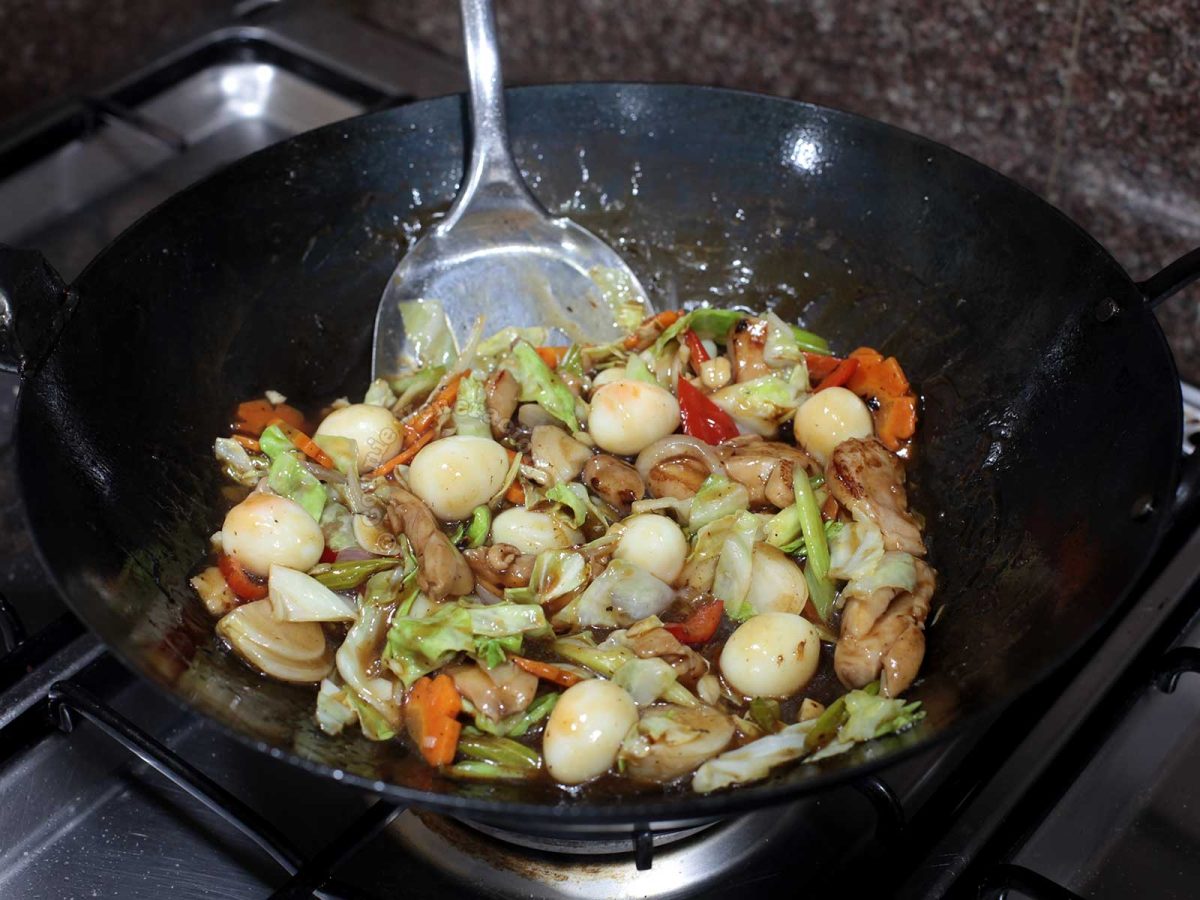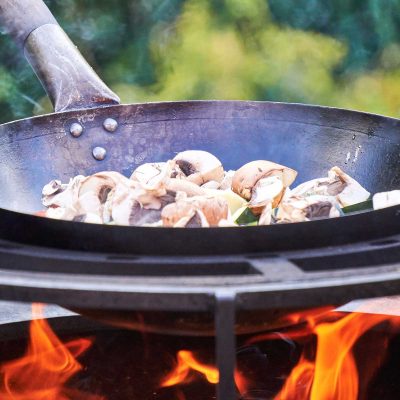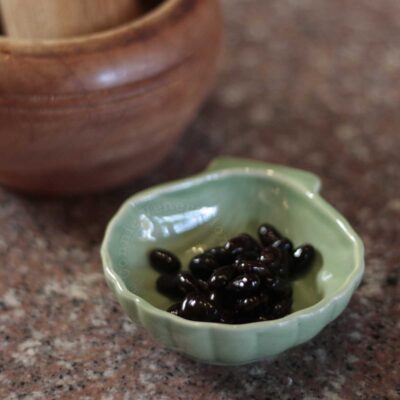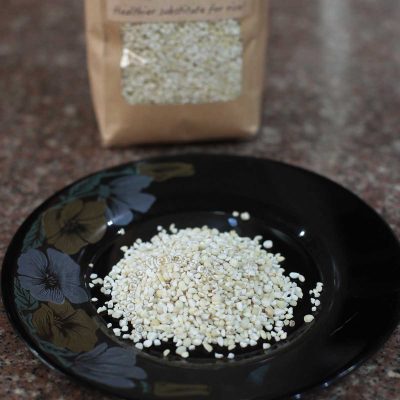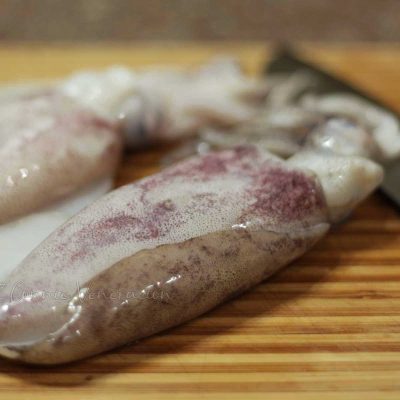What exactly is stir frying?
Stir frying is a cooking technique where ingredients cut into small pieces are fried in a small amount of oil over intensely high temperature for a short time. Although it originated in China, stir frying as a cooking method has spread over most of Asia.
Is stir frying similar to sauteing?
Well, both require a small amount of oil to cook ingredients that have been cut into small pieces. But sauteing requires a lower temperature than stir frying.
Two things you need to stir fry successfully
Because of the very nature of stir frying, a cooking pan able to withstand a high cooking temperature, and distribute heat evenly, is ideal. A wok is the perfect pan for stir frying.
Buying a wok? Make it carbon steel.
If you could have only one cooking pan, what would it be? My answer is a wok because I can stir fry, pan fry, deep fry, braise, poach, stew and even steam in it. In fact, add making a soup to that list. Not kidding.
The high cooking temperature also requires a cooking oil that won’t burn before it gets hot enough for stir frying.
When stir frying, always use oil with a high smoke point
You can’t stir fry properly unless you crank up the heat. High temperature cooking requires a cooking oil with a high smoke point. What oil is ideal?
With the cooking pan and ideal oil dealt with, let’s move to the correct preparation method before the actual stir frying.
Prep ALL the ingredients before you start stir frying
You may have heard or read about it before. In fact, you may have heard or read about it so many times already that you’re so tired of this little piece of information. I’m still going to say it here.
With stir fried dishes, the preparation takes twice as long — sometimes, even longer — as the actual cooking. Because the cooking time is extremely short, it is essential that all the ingredients have been prepped before the stir frying begins. If you throw one ingredient into the wok then leave it to prep the next ingredient, the first ingredient will be overcooked by the time you are done with the second. So, prep ALL the ingredients first.
Drying and cutting the meat
Not all stir fries include meat. Some have seafood in lieu of meat; others have neither meat nor seafood. In those instances when meat is among the ingredients of the stir fry, you need to prep the meat ahead of all the other ingredients.
In this example, we’re using chicken.
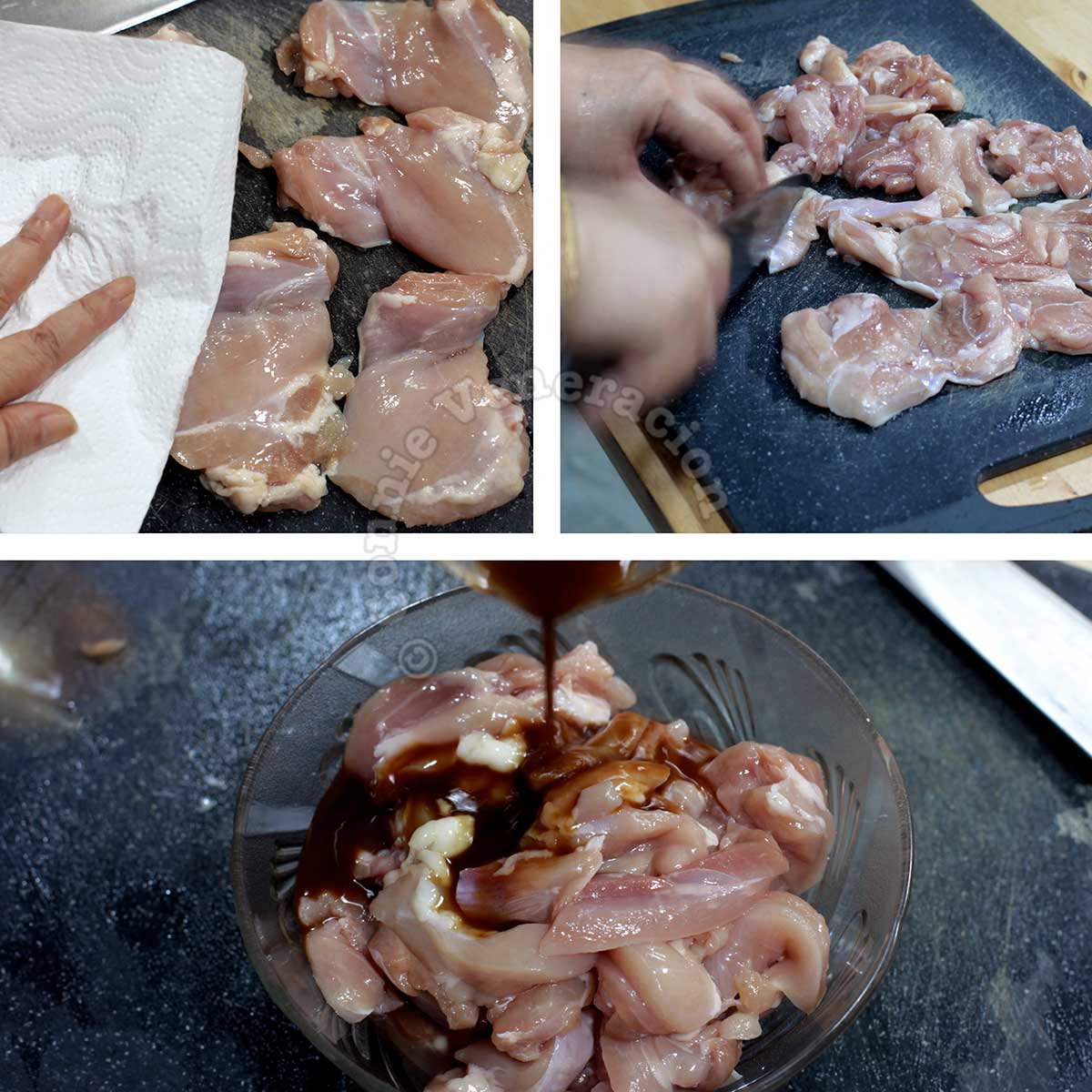
Start by patting the chicken dry with paper towels. You want to remove as much moisture as possible before cutting the meat into small pieces
Note that different stir fry recipes call for different cuts of meat. Some call for thin slices while others require strips or even small cubes. Whatever the manner of cutting, there is one rule you have to know: After cutting, each piece of meat or seafood should be small enough cook in a few minutes. So, go small.
Trim and cut the vegetables
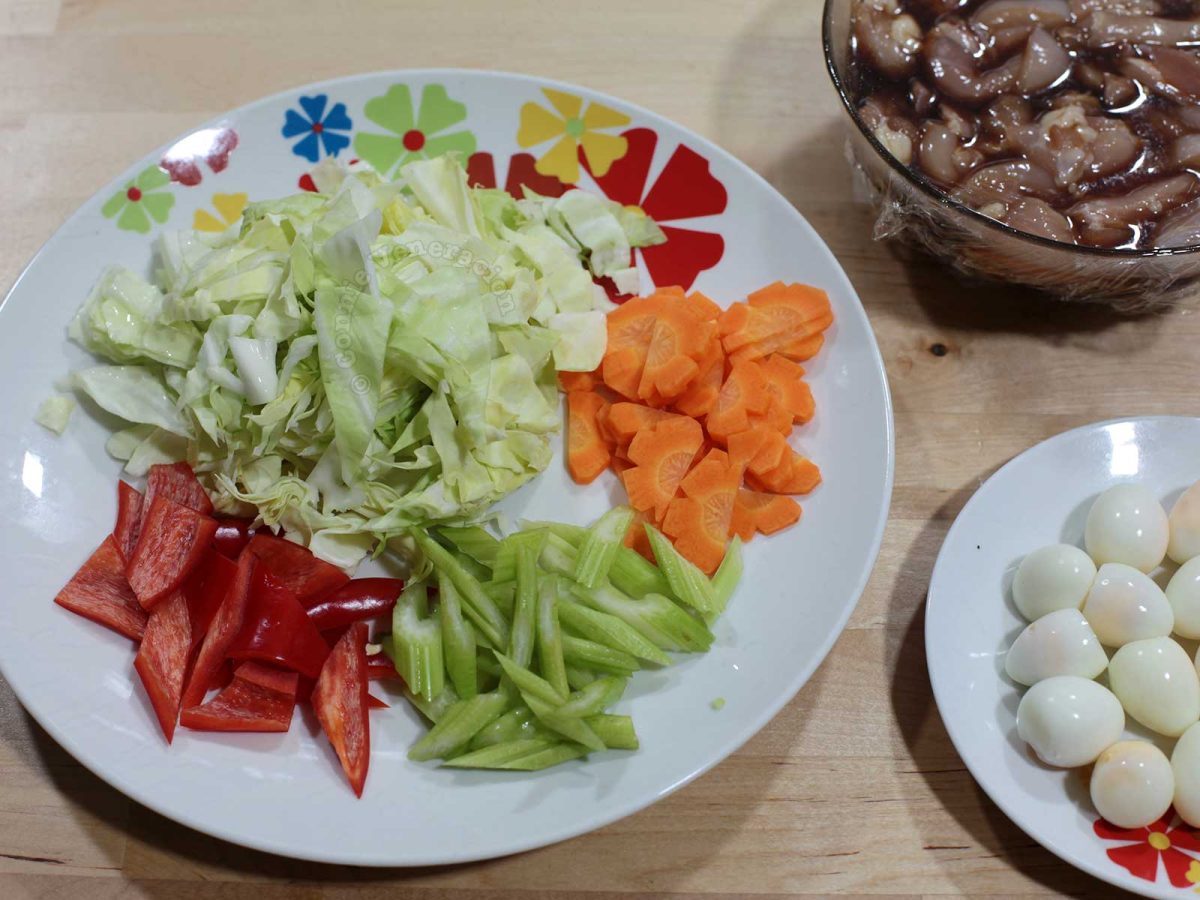
Peel and trim the vegetables before cutting. In this example, we’re using carrot, bell pepper, celery and cabbage — and onion and garlic, of course, which you don’t see in the photo. Like the chicken, the vegetables are cut into small pieces.
Because I included quail eggs in my stir fry, I boiled the eggs and shelled them.
Mix the sauce
Not all stir fried dishes require a sauce, but… who doesn’t like a thickish glossy sauce coating every piece of meat and vegetables? So, mix your sauce at this point. The most basic is water, soy sauce, oyster sauce, sesame seed oil, sugar, pepper and starch.
Now, we come to the actual stir frying.
I like to stir fry the vegetables first
Most cooks start with stir frying the meat or seafood first, add the vegetables, pour in the sauce and cook until the sauce is thick and clear.
My problem with that order is that there is always the chance that one or more ingredient will be overcooked by the time the sauce thickens. I prefer to stir fry the vegetables first.
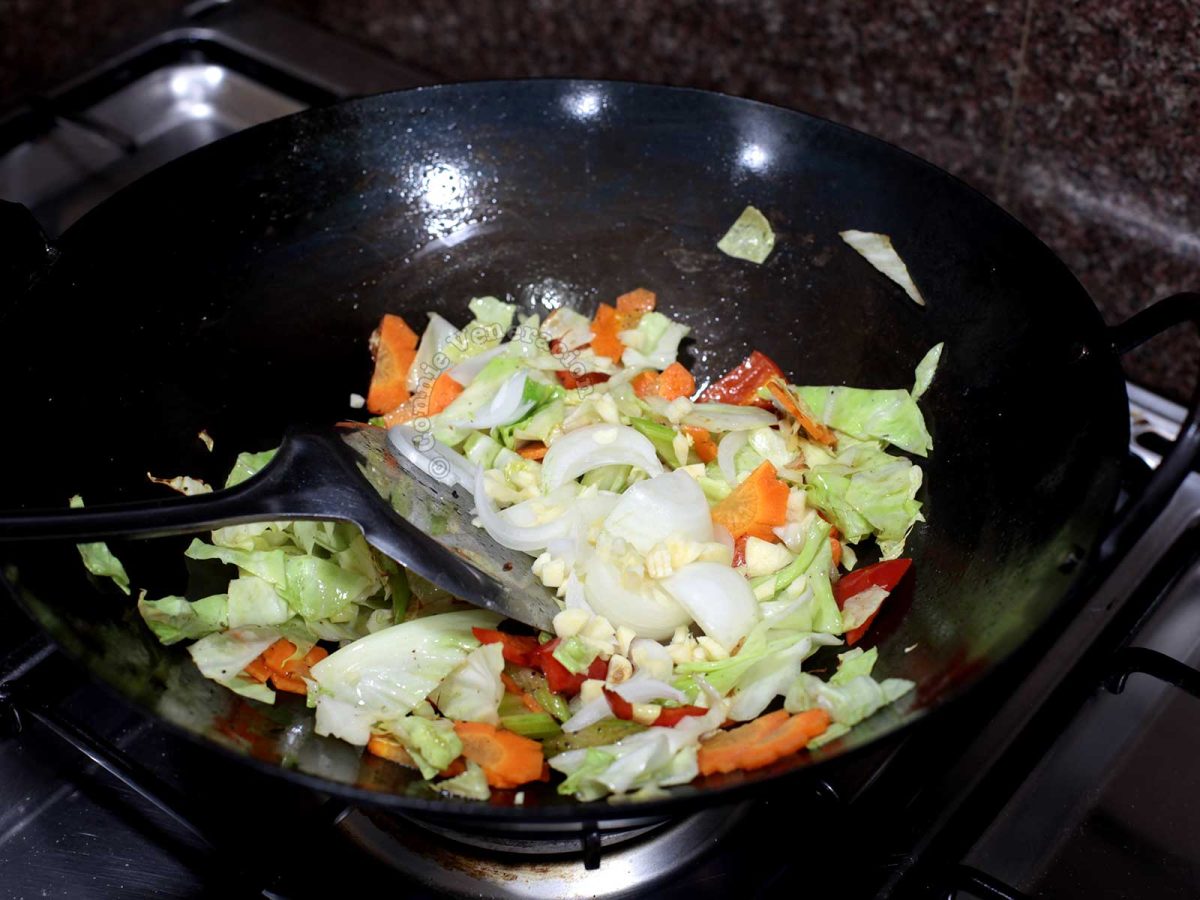
As a general rule, the vegetable that takes longest to cook should go into the wok first. But since the vegetables I’m using for this example require just about the same length of cooking, I threw them into the wok at the same time.
Heat the wok before you pour in the oil. Then, make sure that the oil is hot (it should start to smoke a bit) before you start stir frying. Keep the heat high at all times.
I stir fried the vegetables with a bit of salt and pepper for about 20 seconds, added the sliced onion and chopped garlic and stir fried for another 20 seconds.
Why not start with stir frying the onion and garlic first? Well, you can do that. BUT I find that onion softens faster than other vegetables, and garlic burns fast. So, I added them when the other vegetables were already half done.
When the vegetables are done — meaning, they are cooked but still lightly crisp — scoop them out and move to a plate.
Stir fry the meat
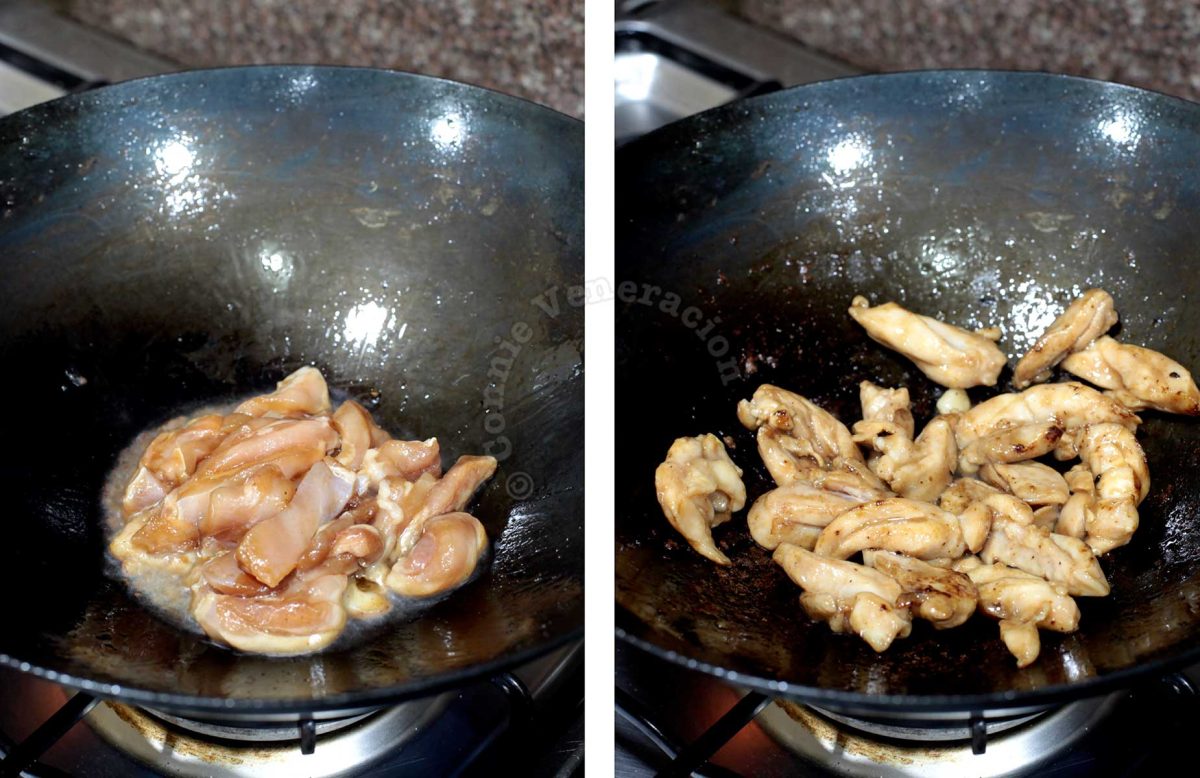
Since the vegetables will have used up the oil in the wok, you’ll need to heat more oil in which to stir fry the meat. Pour about two tablespoons of oil into the wok and wait for it to start smoking a bit before throwing in the meat — chicken, in this example.
Stir fry the chicken for about three minutes until the edges are just starting to brown. The chicken strips will finish cooking in the sauce.
Add the sauce before the vegetables
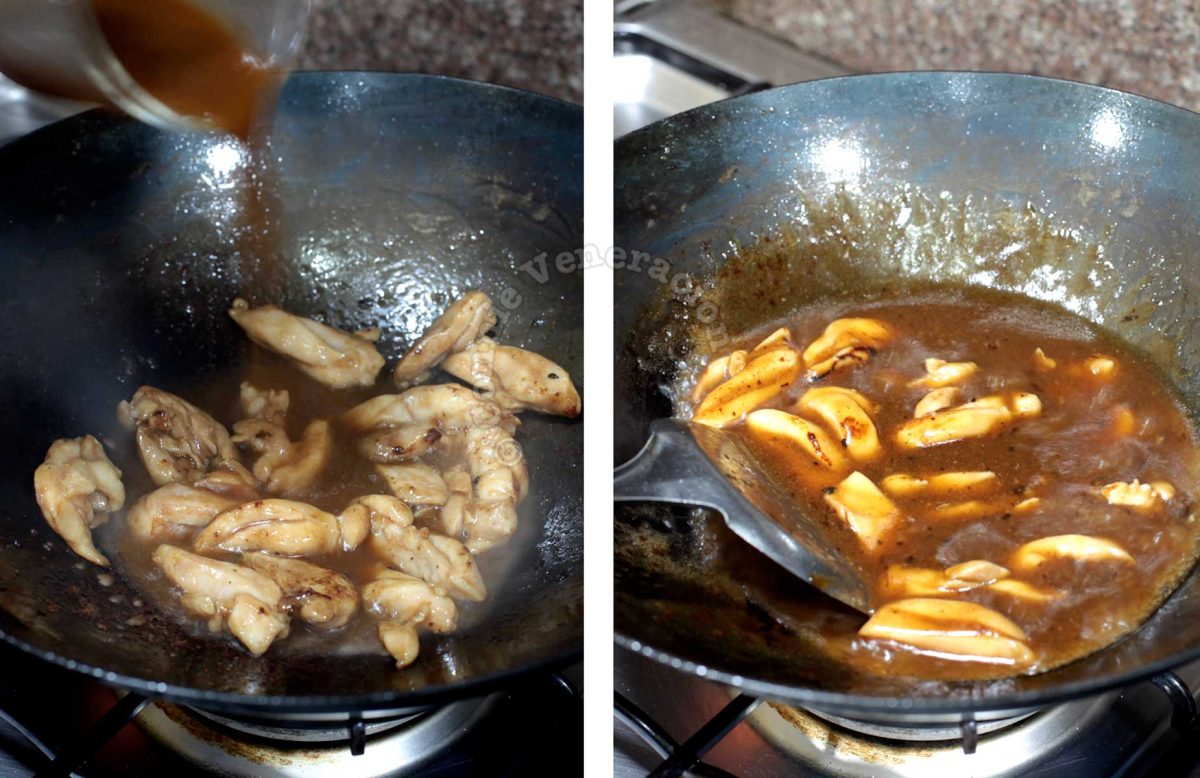
Take your sauce, stir it thoroughly (the starch will have settled to the bottom) and pour into the wok. Continue stir frying until the sauce is thick and has lost its cloudy appearance.
Why not add the vegetables first? Because you have been so careful not to overcook them that you bothered to cook them separately, so why risk overcooking them while waiting for the sauce to thicken, right?
Add the vegetables and heat through
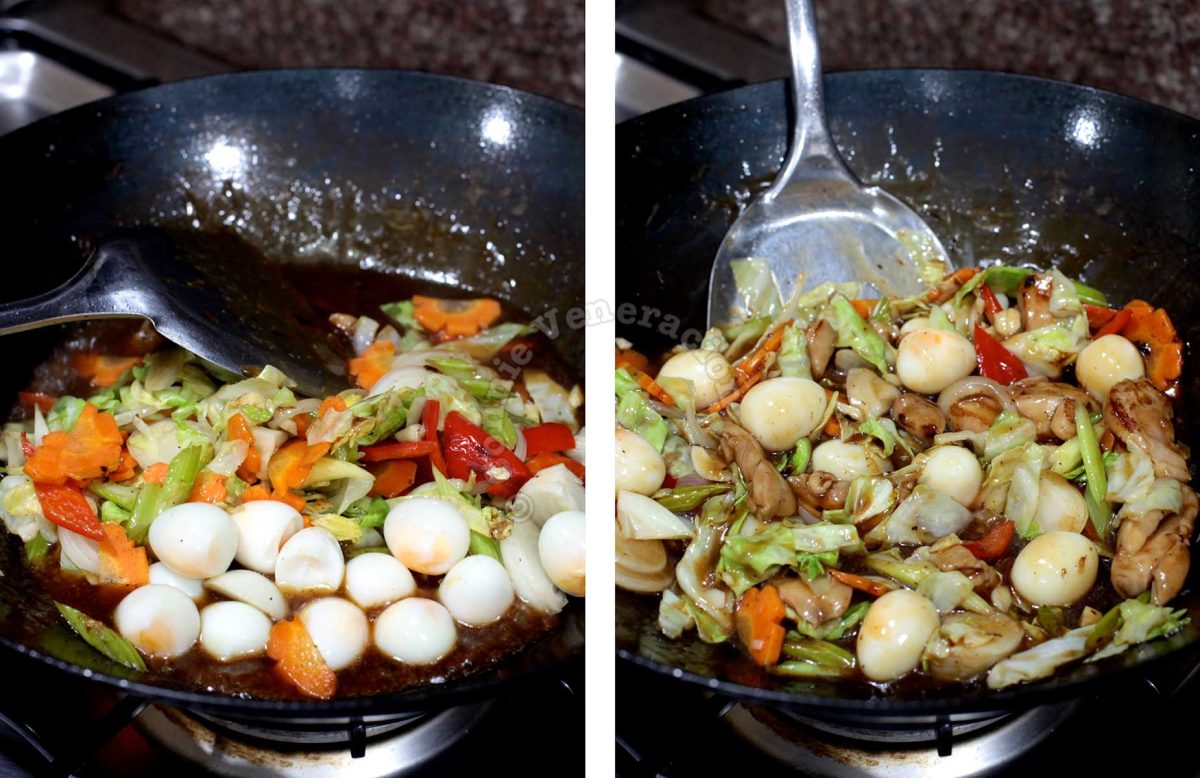
Now, take all your cooked ingredients — vegetables and quail eggs in this example — and add them to the chicken and sauce. Toss for about ten seconds which should be just long enough to heat everything through and make sure every piece of vegetable is coated with sauce.
Transfer your stir fry to a serving plate at once. The wok is a metal and it will retain heat even after you have turned off the stove. You don’t want your stir fry to continue cooking in the residual heat. So, transfer the stir fry to a plate and serve at once.

